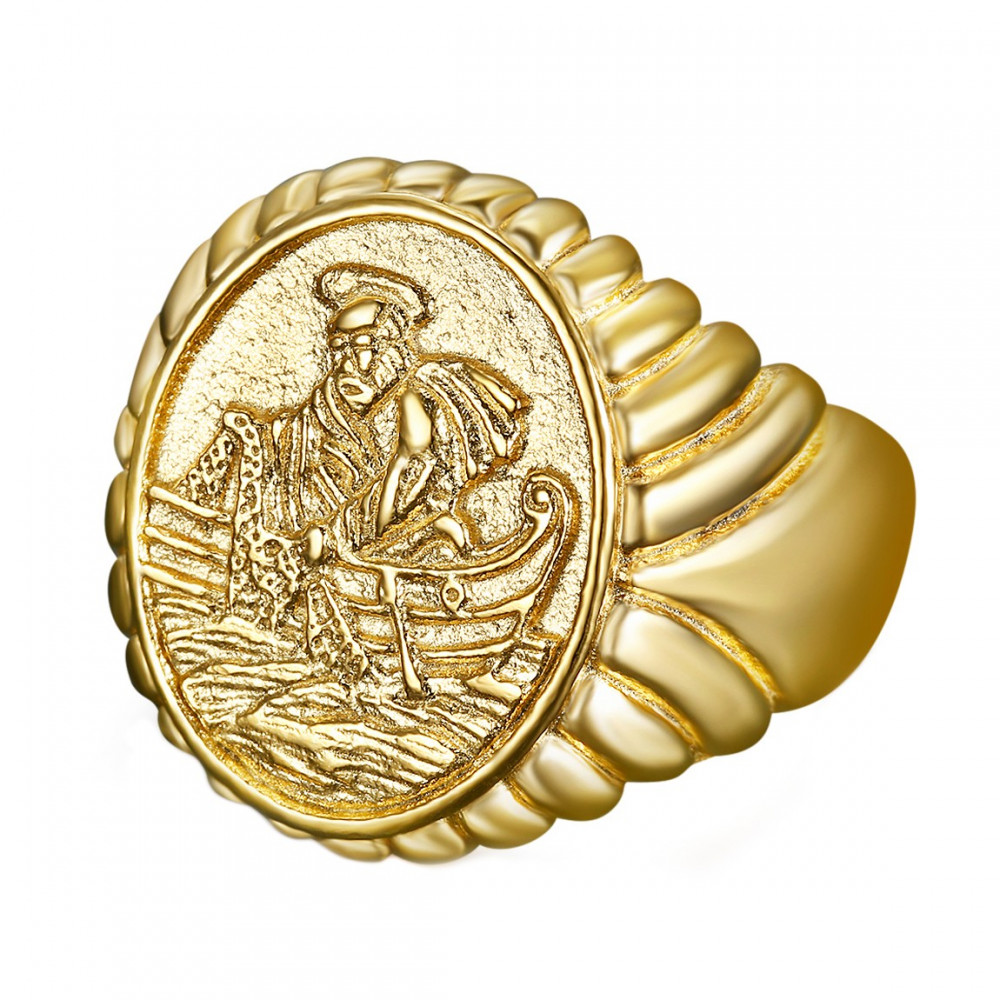Pope Francis's Signet Ring: Its Fate After His Death Explained

Table of Contents
The Significance of the Fisherman's Ring
The Fisherman's Ring is a powerful symbol of the Pope's authority and his role as the successor of St. Peter. Its design, depicting St. Peter engaged in fishing, is deeply symbolic.
- Represents the Pope's authority and his role as the successor of St. Peter: The ring visually connects the current Pope to the very foundation of the Catholic Church. The image of St. Peter, a humble fisherman called to be a leader, serves as a reminder of the spiritual calling and leadership responsibilities of the Pope.
- The ring depicts St. Peter fishing, symbolizing his calling and the Pope’s spiritual leadership: This imagery serves as a constant reminder of the Pope's role as a spiritual shepherd guiding his flock. The humble origins of St. Peter contrast with the immense authority of the papacy, highlighting the spiritual nature of the office.
- Used to authenticate papal documents and decrees: Historically, the Fisherman's Ring was used to affix the papal seal to official documents, ensuring their authenticity. This practical function underscored the ring's importance as a symbol of papal authority. The ring served as a critical element in verifying the legitimacy of decrees and official pronouncements from the Holy See.
The Ritual of Destruction: Why is the Ring Destroyed?
The destruction of the Fisherman's Ring upon the Pope's death is a time-honored tradition rooted in both practical and symbolic considerations.
- Prevents forgery or misuse of the papal seal after the Pope's death: Destroying the ring immediately eliminates the possibility of fraudulent documents being issued under the deceased Pope's authority. This is a crucial aspect, ensuring the integrity of official papal pronouncements.
- Symbolic representation of the end of the Pope's earthly authority: The destruction of the ring signifies the transition of power and the end of the deceased Pope's earthly reign. It's a visual and ritualistic declaration of the change in leadership.
- A ritual emphasizing the transient nature of earthly power: The ceremony serves as a poignant reminder that even the highest earthly authority is ultimately temporary. It underscores the spiritual focus of the papacy.
- Historical context – how this tradition evolved: The practice likely developed gradually over centuries, growing from a practical need to prevent fraud into a significant symbolic ritual. The exact origins remain debated among historians, but its current significance is clear.
The Process of Destruction
The destruction of the Fisherman's Ring is a formal ceremony usually overseen by the Master of Papal Ceremonies.
- The Master of Papal Ceremonies leads the ceremony: This ensures the ritual is conducted with proper solemnity and decorum, reflecting the significance of the event.
- The ring is typically crushed: This is the most common method of destruction, ensuring the ring's image and the papal seal cannot be replicated.
- The specific details of the ceremony may vary slightly over time: While the core principle remains consistent, minor variations in the ceremony's execution may occur throughout history.
What Happens to the Signet Ring After Destruction?
After the destruction ceremony, the remnants of Pope Francis's signet ring, like those of his predecessors, will be handled respectfully.
- Often disposed of respectfully, perhaps in a symbolic manner: The exact method of disposal is generally not publicly disclosed, but it would undoubtedly be done in a manner befitting the object's significance.
- The exact method may not be widely publicized: The secrecy surrounding the disposal likely contributes to the solemnity and symbolic weight of the ritual.
The Future of Pope Francis’s Signet Ring
Based on established tradition, the future of Pope Francis's signet ring is clear.
- It will undergo the traditional destruction ceremony: Following his death, the ring will be destroyed as per established Catholic tradition.
- The timing of the ceremony relative to his passing: The ceremony would take place relatively soon after his death, as part of the overall funeral rites.
- The potential for any deviation from traditional practices: While unlikely, there’s always the possibility of a minor variation in the procedure, though the core principle of destruction will remain.
Conclusion
The destruction of the Pope's signet ring, including that of Pope Francis, is a powerful ritual. It underscores the temporary nature of papal authority and safeguards against the misuse of the papal seal. The ceremony itself is a solemn act steeped in centuries of tradition, combining practical concerns with deep symbolism. Learn more about the rich history and symbolism surrounding the Pope Francis's signet ring and other papal traditions by exploring related resources online. Understanding this ritual provides valuable insight into the Catholic Church and its practices.

Featured Posts
-
 Breast Cancer Diagnosis After Missed Mammogram Lessons From Tina Knowles Experience
Apr 24, 2025
Breast Cancer Diagnosis After Missed Mammogram Lessons From Tina Knowles Experience
Apr 24, 2025 -
 Abrego Garcia Judge Orders End To Stonewalling By Us Lawyers
Apr 24, 2025
Abrego Garcia Judge Orders End To Stonewalling By Us Lawyers
Apr 24, 2025 -
 Chinas Lpg Reliance Shifts East Impact Of Us Tariffs On Energy Imports
Apr 24, 2025
Chinas Lpg Reliance Shifts East Impact Of Us Tariffs On Energy Imports
Apr 24, 2025 -
 Full List Famous Faces Affected By The Palisades Fires
Apr 24, 2025
Full List Famous Faces Affected By The Palisades Fires
Apr 24, 2025 -
 Teslas Falling Profits The Musk Trump Administration Connection
Apr 24, 2025
Teslas Falling Profits The Musk Trump Administration Connection
Apr 24, 2025
